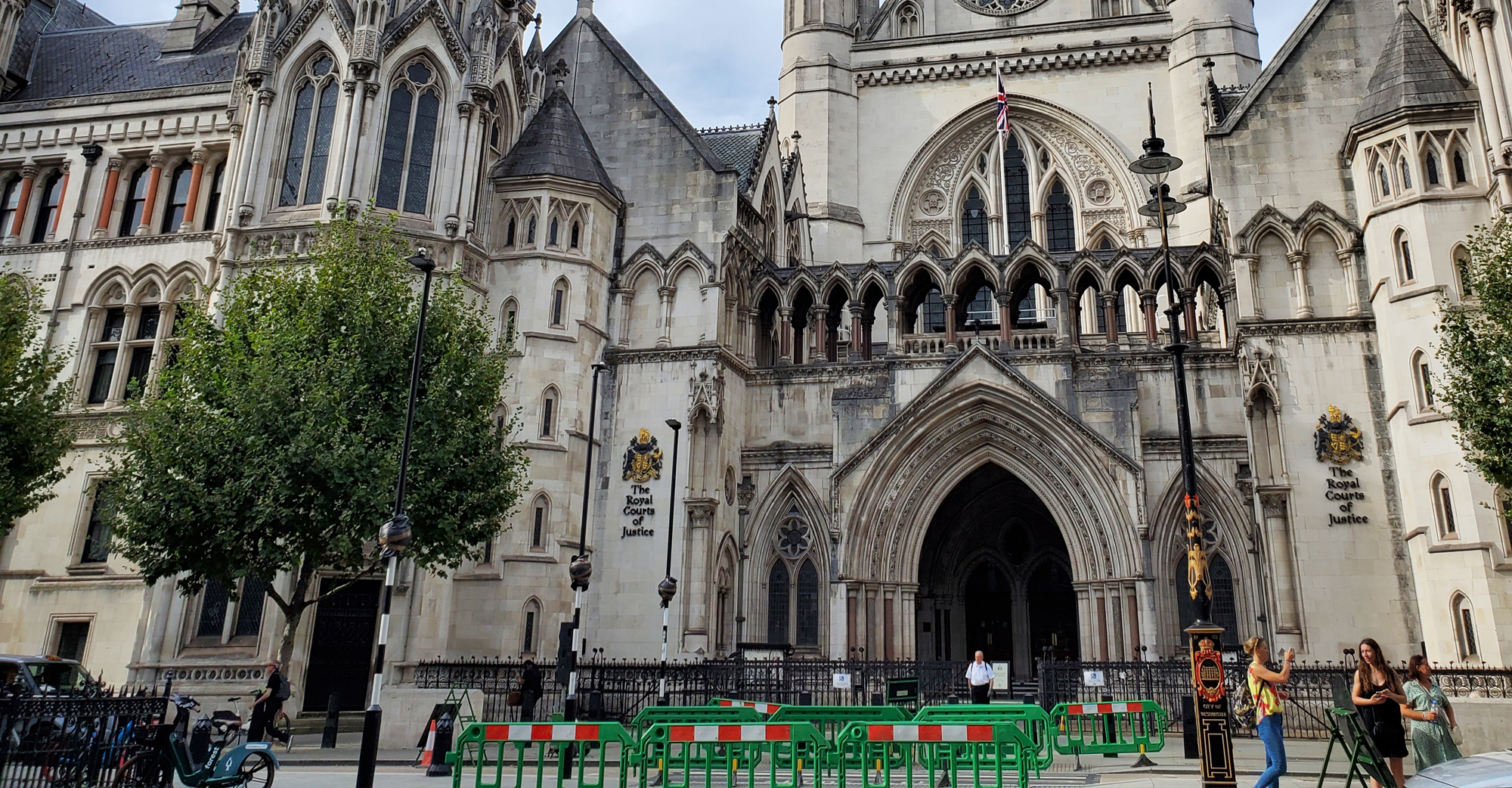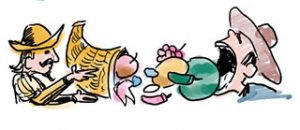Curated by Ed Boitano
Are you committing an ethnic slur when saying, gypped? Name the Meryl Streep film where she plays an American. These questions and more are in our 35th installment of Traveling Boy’s Global Travel Trivia game.
Global Trivia 35
Start
Congratulations!
You have completed Global Trivia 35.

You scored %%SCORE%% out of a possible 5 points.
Your performance was: %%RATING%%
Your answers are highlighted below.
Question 1 |

Name the film starring Meryl Streep where she plays an American.
A | Bridges of Madison County |
B | A Cry in the Dark |
C | The House of the Spirits |
D | Mama Mia |
E | Out of Africa |
Question 1 :
Answer: D. Mamma Mia! (2008): Streep plays a free-spirited American expiate living on a Greek island.
The Bridges of Madison County (1995): Italian accent
A Cry in the Dark (1988): Australian accent
The House of the Spirits (1993); Chilean accent
Out of Africa (1985): Danish accent
Sophie's Choice (1982): Polish accent
Mary Louise "Meryl" Streep (born June 22, 1949) is an American actress, often described as the "best actress of her generation." Particularly known for her versatility and accents, Streep has been nominated for a record 21 Academy Awards, where she has won three. Among other accolades, she has received 32 Golden Globe nominations, more than any other person, and won eight.
The Bridges of Madison County (1995): Italian accent
A Cry in the Dark (1988): Australian accent
The House of the Spirits (1993); Chilean accent
Out of Africa (1985): Danish accent
Sophie's Choice (1982): Polish accent
Mary Louise "Meryl" Streep (born June 22, 1949) is an American actress, often described as the "best actress of her generation." Particularly known for her versatility and accents, Streep has been nominated for a record 21 Academy Awards, where she has won three. Among other accolades, she has received 32 Golden Globe nominations, more than any other person, and won eight.
Question 2 |
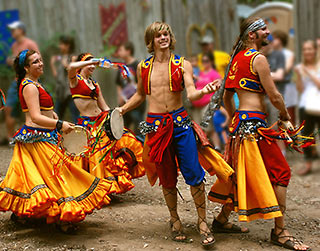
Why were the Romani people referred to as Gypsies in Europe and the Americas?
A | The Middle High German term, (originally ‘Gipselust’) for Gypsy, a community that loves to sing. |
B | Balkan term for ‘going barefooted’ |
C | Derived from ‘Gyposki,’ the Polish name for travel or travelers |
D | Esteemed breeder of horses, stemming from English racehorse, Gypsy Rose Lee |
E | Europeans believed they came from Egypt |
Question 2 :
Answer: E. The Romani people were called "Gypsies" because Europeans mistakenly believed they came from Egypt
Romani (also spelled Romany) colloquially known as Roma, are an Indo-Aryan ethnic group, traditionally itinerant, living mostly in Europe and the Americas. The Romani originate from the northern Indian subcontinent, from the Rajasthan, Haryana, and Punjab regions of modern-day India. They entered Europe between the eighth and tenth centuries. "Traveller" is also a common term used to describe Gypsy groups.
The Roma’s own supposed disposition to wander has been forcibly furthered by exile or deportation. Only 80 years after their first appearance in western Europe, they fell under the penalty of banishment in almost all the nations of western Europe. Despite their systematic exile, or transportation abroad, however, they continued to reappear in one guise or another back in the countries they had left.
Few people are aware that ‘gypped’ is a vulgar ethnic slur – meaning to defraud, swindle, cheat – derived from the name Gypsy. Another term used is “gypsy cab,” which is an unlicensed cab.
During World War II, the Nazis embarked on a systematic genocide of the Romani, a process known in Romani as the Porajmos. Romanies were marked for extermination and sentenced to forced labor and imprisonment in concentration camps. They were often killed on sight, especially by the Einsatzgruppen (paramilitary death squads) on the Eastern Front. The total number of victims has been variously estimated at between 220,000 and 1,500,000; even the lower figure would make the Porajmos one of the largest mass killings in history. Per ratio, no ethnic group suffered a greater number of deaths by the hands of the Nazis.
FAMOUS CELEBRITIES OF ROMANI ORIGIN
Michael Caine (1933)
Charlie Chaplin (1889-1977)
Yul Brynner (1920-1985)
Elvis Presley (1935-1977)
Bob Hoskins (1942-2014)
Pablo Picasso (1881-1973)
Rita Hayworth (1918-1987)
Romani (also spelled Romany) colloquially known as Roma, are an Indo-Aryan ethnic group, traditionally itinerant, living mostly in Europe and the Americas. The Romani originate from the northern Indian subcontinent, from the Rajasthan, Haryana, and Punjab regions of modern-day India. They entered Europe between the eighth and tenth centuries. "Traveller" is also a common term used to describe Gypsy groups.
The Roma’s own supposed disposition to wander has been forcibly furthered by exile or deportation. Only 80 years after their first appearance in western Europe, they fell under the penalty of banishment in almost all the nations of western Europe. Despite their systematic exile, or transportation abroad, however, they continued to reappear in one guise or another back in the countries they had left.
Few people are aware that ‘gypped’ is a vulgar ethnic slur – meaning to defraud, swindle, cheat – derived from the name Gypsy. Another term used is “gypsy cab,” which is an unlicensed cab.
During World War II, the Nazis embarked on a systematic genocide of the Romani, a process known in Romani as the Porajmos. Romanies were marked for extermination and sentenced to forced labor and imprisonment in concentration camps. They were often killed on sight, especially by the Einsatzgruppen (paramilitary death squads) on the Eastern Front. The total number of victims has been variously estimated at between 220,000 and 1,500,000; even the lower figure would make the Porajmos one of the largest mass killings in history. Per ratio, no ethnic group suffered a greater number of deaths by the hands of the Nazis.
FAMOUS CELEBRITIES OF ROMANI ORIGIN
Michael Caine (1933)
Charlie Chaplin (1889-1977)
Yul Brynner (1920-1985)
Elvis Presley (1935-1977)
Bob Hoskins (1942-2014)
Pablo Picasso (1881-1973)
Rita Hayworth (1918-1987)
Question 3 |
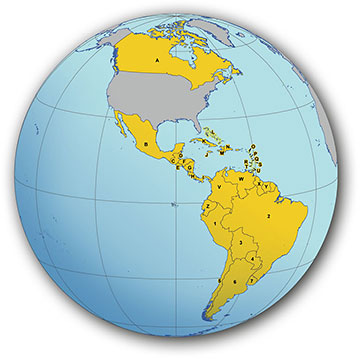
What nation was the second democracy in the Western Hemisphere?
A | Argentina |
B | Canada |
C | Colombia |
D | Haiti |
E | United States |
Question 3 :
Answer: D. Haiti
On January 1, 1804, Haiti proclaimed its independence from France, and became the second independent state in the Western Hemisphere and the first free black republic in the world. It started with a slave revolt in the French Haitian colony, then named Saint-Domingue. Toussaint-Louverture, a former slave, took control of the rebels. Gifted with natural military genius, Toussaint organized an effective guerrilla war against the island’s French colonial population. He found able generals in two other former slaves, Jean-Jacques Dessalines and Henri Christophe, and in 1795 orchestrated the abolishment of slavery. Toussaint became governor-general of the colony, and in 1801 conquered the Spanish portion of the island, freeing the slaves there as well. In 1802, a French invasion force ordered by Napoleon landed on Saint-Domingue. After several months of furious fighting, Toussaint agreed to a cease-fire. He retired to his plantation, but in 1803 was arrested and taken to a dungeon in the French Alps, where he was tortured and died. Soon after Toussaint’s arrest, Napoleon announced his intention to reintroduce slavery on Haiti/Saint-Domingue. Dessalines led a new revolt against French rule. With the aid of the British, the rebels scored a major victory against the French force, which led to their surrender. In 1804, General Dessalines assumed dictatorial power, and renamed the former colony, Haiti, after its original Arawak name. Haiti became the official second independent nation in the Americas.
The United States, the first independent nation in the western hemisphere, initially supported the rebellion, but then changed sides and supported France. This was due to a fear of a slave revolt in their own nation, which was the largest (and considered the most callous) slave-holding nation in the world.
On January 1, 1804, Haiti proclaimed its independence from France, and became the second independent state in the Western Hemisphere and the first free black republic in the world. It started with a slave revolt in the French Haitian colony, then named Saint-Domingue. Toussaint-Louverture, a former slave, took control of the rebels. Gifted with natural military genius, Toussaint organized an effective guerrilla war against the island’s French colonial population. He found able generals in two other former slaves, Jean-Jacques Dessalines and Henri Christophe, and in 1795 orchestrated the abolishment of slavery. Toussaint became governor-general of the colony, and in 1801 conquered the Spanish portion of the island, freeing the slaves there as well. In 1802, a French invasion force ordered by Napoleon landed on Saint-Domingue. After several months of furious fighting, Toussaint agreed to a cease-fire. He retired to his plantation, but in 1803 was arrested and taken to a dungeon in the French Alps, where he was tortured and died. Soon after Toussaint’s arrest, Napoleon announced his intention to reintroduce slavery on Haiti/Saint-Domingue. Dessalines led a new revolt against French rule. With the aid of the British, the rebels scored a major victory against the French force, which led to their surrender. In 1804, General Dessalines assumed dictatorial power, and renamed the former colony, Haiti, after its original Arawak name. Haiti became the official second independent nation in the Americas.
The United States, the first independent nation in the western hemisphere, initially supported the rebellion, but then changed sides and supported France. This was due to a fear of a slave revolt in their own nation, which was the largest (and considered the most callous) slave-holding nation in the world.
Question 4 |
Name the food item not found in the pre-Columbian Americas.
A | Beans |
B | Corn |
C | Peppers |
D | Potatoes |
E | Watermelon |
Question 4 :
Answer: E. Watermelon
Watermelon (Citrullus lanatus) is a plant species in the family Cucurbitaceae, a vine-like flowering plant originating in West Africa. It is a highly cultivated fruit worldwide, having more than 1000 varieties. There is evidence from seeds in Pharaoh tombs of watermelon cultivation in Ancient Egypt.
The discovery of the New World by Columbus began what became known as the Columbian Exchange. This was an exchange of people, plants, animals and disease across the Atlantic Ocean. The Europeans were the main beneficiaries of this exchange. Europe received new crops of corn and potatoes which greatly improved European diets. Native Americans, however, suffered from the exchange of germs, to which they had never been exposed. As a result, it is estimated that as many as 90% of Native Americans died from small pox and other diseased brought by the Europeans. The changes in agriculture significantly altered global populations. The most significant immediate impact of the Columbian exchange was the cultural exchanges and the transfer of people (both free and enslaved) between continents.
Watermelon (Citrullus lanatus) is a plant species in the family Cucurbitaceae, a vine-like flowering plant originating in West Africa. It is a highly cultivated fruit worldwide, having more than 1000 varieties. There is evidence from seeds in Pharaoh tombs of watermelon cultivation in Ancient Egypt.
The discovery of the New World by Columbus began what became known as the Columbian Exchange. This was an exchange of people, plants, animals and disease across the Atlantic Ocean. The Europeans were the main beneficiaries of this exchange. Europe received new crops of corn and potatoes which greatly improved European diets. Native Americans, however, suffered from the exchange of germs, to which they had never been exposed. As a result, it is estimated that as many as 90% of Native Americans died from small pox and other diseased brought by the Europeans. The changes in agriculture significantly altered global populations. The most significant immediate impact of the Columbian exchange was the cultural exchanges and the transfer of people (both free and enslaved) between continents.
Question 5 |
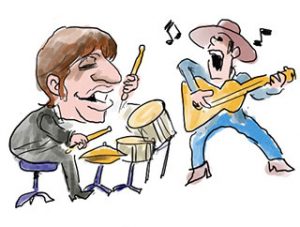
Name the Liverpool band in which Ringo Starr played drums before joining the Beatles.
A | Billy J. Kramer and The Dakotas |
B | Freddie and the Dreamers |
C | Rory Storm and the Hurricanes |
D | Gerry and the Pacemakers |
E | The Searchers |
Question 5 :
Answer: C. Rory Storm and the Hurricanes
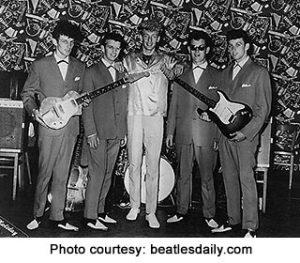
Born in Liverpool in 1942, Alan Caldwell took the name Rory Storm when he formed his own rock band, Rory Storm & the Hurricanes. In 1962, they were the most popular band in Liverpool with more fans than their friends, the Beatles. It is widely believed that an upstart singer Rod Stewart, who saw Rory perform many times in the early days, "stole" the singer's trademark persona and found success of his own with well-choreographed moves on stage and flaunting his blonde hair. Rory would indirectly make history when he advised his drummer, Ritchie Starkey, to change his name to "Ringo" because of the drummer's penchant for wearing rings. Ringo Starr had to fill in many times for original Beatle drummer, Pete Best. When Best was forced to leave the Beatles – believed to be due to an inferior drumming style – Ringo was the unanimous choice to replace him.
With the explosion of Beatlemania, other groups out of Liverpool, such as Gerry & the Pacemakers, The Searchers and Billy J. Kramer & The Dakotas achieved success. However, Rory and his band fell on hard times and were constantly passed over for a recording contract.
Rory had to deal almost on a daily basis with the Beatles' success because his sister Iris was Paul McCartney's girlfriend, before and after the Beatles’ success. Even after the couples’ break-up, Paul kept in touch regularly with Rory's mother, Violet Caldwell. In fact, when Paul wrote Yesterday, the first person he called was Violet to sing it to her over the phone.
Some followers of the Liverpool club scene prior to 1962 believe that Rory Storm was just as talented as any of the acts that found fame in the "British Invasion." Success was all around Rory Storm for many years, but life dealt him an unfortunate hand.

Born in Liverpool in 1942, Alan Caldwell took the name Rory Storm when he formed his own rock band, Rory Storm & the Hurricanes. In 1962, they were the most popular band in Liverpool with more fans than their friends, the Beatles. It is widely believed that an upstart singer Rod Stewart, who saw Rory perform many times in the early days, "stole" the singer's trademark persona and found success of his own with well-choreographed moves on stage and flaunting his blonde hair. Rory would indirectly make history when he advised his drummer, Ritchie Starkey, to change his name to "Ringo" because of the drummer's penchant for wearing rings. Ringo Starr had to fill in many times for original Beatle drummer, Pete Best. When Best was forced to leave the Beatles – believed to be due to an inferior drumming style – Ringo was the unanimous choice to replace him.
With the explosion of Beatlemania, other groups out of Liverpool, such as Gerry & the Pacemakers, The Searchers and Billy J. Kramer & The Dakotas achieved success. However, Rory and his band fell on hard times and were constantly passed over for a recording contract.
Rory had to deal almost on a daily basis with the Beatles' success because his sister Iris was Paul McCartney's girlfriend, before and after the Beatles’ success. Even after the couples’ break-up, Paul kept in touch regularly with Rory's mother, Violet Caldwell. In fact, when Paul wrote Yesterday, the first person he called was Violet to sing it to her over the phone.
Some followers of the Liverpool club scene prior to 1962 believe that Rory Storm was just as talented as any of the acts that found fame in the "British Invasion." Success was all around Rory Storm for many years, but life dealt him an unfortunate hand.
Once you are finished, click the button below. Any items you have not completed will be marked incorrect.
Get Results
There are 5 questions to complete.
You have completed
questions
question
Your score is
Correct
Wrong
Partial-Credit
You have not finished your quiz. If you leave this page, your progress will be lost.
Correct Answer
You Selected
Not Attempted
Final Score on Quiz
Attempted Questions Correct
Attempted Questions Wrong
Questions Not Attempted
Total Questions on Quiz
Question Details
Results
Date
Score
Hint
Time allowed
minutes
seconds
Time used
Answer Choice(s) Selected
Question Text
All done
Deplorable! You need to travel more! This is pathetic!
Deplorable! You need to travel more! This is pathetic!
Embarrassing! Keep trying! We know you're better than that. Play the game again.
Not that bad! But not good either. Play the game again.
Pretty good ... but not perfect.
Perfect! Are you brilliant traveler or what?
